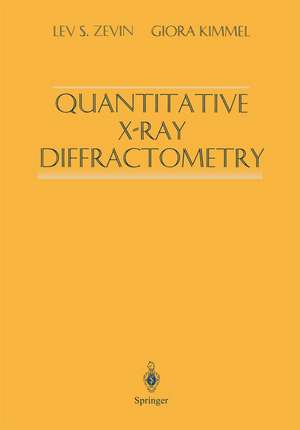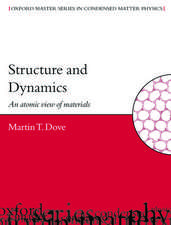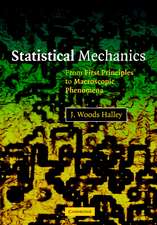Quantitative X-Ray Diffractometry
Autor Lev S. Zevin Editat de Inez Mureinik Autor Giora Kimmelen Limba Engleză Paperback – 27 dec 2011
Preț: 648.05 lei
Preț vechi: 762.42 lei
-15% Nou
Puncte Express: 972
Preț estimativ în valută:
124.01€ • 130.07$ • 103.23£
124.01€ • 130.07$ • 103.23£
Carte tipărită la comandă
Livrare economică 01-15 aprilie
Preluare comenzi: 021 569.72.76
Specificații
ISBN-13: 9781461395379
ISBN-10: 1461395372
Pagini: 396
Ilustrații: XVII, 372 p.
Dimensiuni: 170 x 244 x 21 mm
Greutate: 0.63 kg
Ediția:Softcover reprint of the original 1st ed. 1995
Editura: Springer
Colecția Springer
Locul publicării:New York, NY, United States
ISBN-10: 1461395372
Pagini: 396
Ilustrații: XVII, 372 p.
Dimensiuni: 170 x 244 x 21 mm
Greutate: 0.63 kg
Ediția:Softcover reprint of the original 1st ed. 1995
Editura: Springer
Colecția Springer
Locul publicării:New York, NY, United States
Public țintă
ResearchCuprins
1 Introduction.- 1.1 Phase analysis—when and why.- 1.2 Phase analysis as an analytical method.- 1.3 History of quantitative X-ray phase analysis.- 2 Physical basis.- 2.1 Interaction of X-rays with material.- 2.2 Intensity in powder diffraction.- 2.3 Background—angle variation and intensity.- 2.4 X-ray diffraction by nonhomogeneous polycrystalline materials.- 2.5 Orientation of reflecting particles.- 3 Geometric aspects of X-ray diffractometry.- 3.1 Geometric schemes in X-ray diffractometry.- 3.2 Diffractometers with Bragg-Brentano reflection focusing.- 3.3 Diffractometers with Seeman-Bohlin reflection focusing.- 3.4 Transmission technique with constant specimen-detector distance (Bragg-Brentano transmission analog).- 3.5 Transmission technique with an invariant focusing circle (Guinier diffractometer or the Seeman-Bohlin transmission analog).- 3.6 Debye-Sherrer geometry.- 3.7 Powder diffractometry with synchrotron radiation.- 3.8 Position-sensitive detectors in powder diffractometry.- 4 Methodology of quantitative phase analysis.- 4.1 Introduction.- 4.2 Analysis of samples with a known mass absorption coefficient (diffraction-absorption technique).- 4.3 Internal standard method.- 4.4 Doping method in quantitative X-ray diffractometry.- 4.5 Dilution Method.- 4.6 Full-phase analysis of the n-phase sample.- 4.7 Reference intensity ratios in quantitative analysis.- 4.8 Diffraction patterns with overlapping peaks—full diffraction pattern approach.- 4.9 Implementation of calculated powder patterns in QXRD.- 4.10 Standardless Methods.- 4.11 Combination of X-ray diffraction and chemical data.- 4.12 Crystallinity of polymers.- 4.13 Analysis of low-mass samples.- 5 Practical aspects of quantitative phase analysis.- 5.1 Introduction.- 5.2 Instrumentation.- 5.3 Specimenpreparation.- 5.4 Analytical standards.- 5.5 Intensity measurements.- 5.6 Definition and subtraction of background.- 5.7 Determination of sample absorption.- 5.8 Pattern decomposition and simulation.- 5.9 Methodology of corrections for preferred orientation.- 5.10 Estimation of analysis errors.- 5.11 Detection limit.- 5.12 Crystallite statistics.- 6 Industrial applications.- 6.1 Ceramics and glass ceramics.- 6.2 Naturally occurring (geologic) samples.- 6.3 Analysis of Portland cement.- 6.4 Metallurgy.- 6.5 Thin films and coatings.- 6.6 Air pollution (aerosols and airborne dusts).- 6.7 Pharmaceuticals.- References.

















